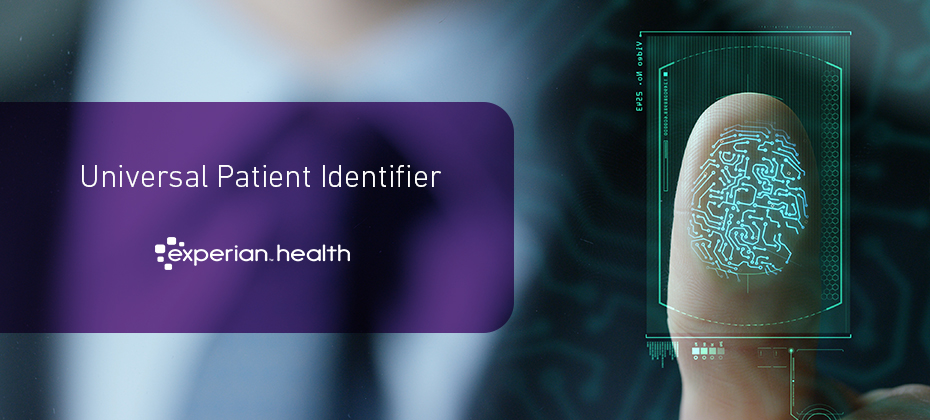Data and Analytics
Capturing the right data and turning it into actionable insights will improve revenue cycle, patient outreach, and marketing strategies.

The urgency to move quickly and vaccinate the population has introduced an entirely new set of challenges for providers regarding patient identity. Many continue to leverage existing processes and solutions already in place, manually handling the pain points that come with them, but now at scale and at an unprecedented rate. As the rollout moves forward, the strain on provider resources will only deepen, as will the risks associated with patient misidentification. The data mess behind the scenes Many patients are registering for the vaccine through a patient portal. While the self-service nature of signing up for the vaccine via a portal is beneficial, patients are unfortunately able to register for a portal account more than once. In fact, some of our clients have reported seeing as many as 1,800 duplicate records created per day. Those duplicate records are generated from some individuals who forgot their log-in account information and opted to create a new account, and others who simply forgot they had an account. With the sense of urgency to secure a vaccination appointment, consumers are moving at a rapid speed and simply want to grab a spot with the quickest credentials available. Regardless, multiple registrations for a single patient will create duplicate patient information. Duplicate records are not only costly (the estimated cost of remediation is $96 per duplicate pair), but they are an incredible drain on staff productivity, and ultimately, they are detrimental to patient safety. Multiple records of a single individual pose a risk for potential allergies, reactions, medical history and more. Even more, it is detrimental specifically to the efficacy of the vaccine as it will be harder to gauge in real time how many patients have been vaccinated, and at what stage, and make it more difficult to truly understand what percentage of the patient population has actually been vaccinated. UIM: not another stop-gap solution Experian’s Universal Identity Manager (UIM) platform is tailor-made for a situation like this as it was developed to create a single view of the same patient with their most current information. The matching technology accurately identifies patients and matches records within and across disparate healthcare organizations, providing a more complete understanding of who a patient is, despite the data gaps or errors that may exist in patient rosters. With it, providers are not only preventing duplicate and overlaid patient records but UIM can also minimize errors and fraud in patient records. It additionally improves staff productivity by decreasing the need for record reconciliation—a benefit likely welcomed by many if they are continuing to see anywhere near 1,800 duplicate records per day. When integrated with a solution like Precise ID, providers can both reconcile duplicate records, and effectively stop them from being created in the first place. By automating the patient portal enrollment process, healthcare organizations can remove the manual processes associated with portal enrollment, optimize critical IT staff resources while securing patient information and support a positive patient experience. State-of-the-art identity proofing, risk-based authentication and knowledge-based questions help providers securely verify each patient’s identity as they enroll for the patient portal. Explore how Experian Health can help resolve and enhance identities as part of the vaccine management process and beyond, not only by resolving duplicate records, but also by enhancing records with the best demographic and social determinants of health data available.

While the various waves of vaccine priority may be largely defined, the ability for many providers to segment their patient populations based on those designations isn't always simple. Without accurate data, there’s a risk that some vulnerable patients will be missed out. We interviewed Mindy Pankoke, senior product manager at Experian Health, about the challenges in segmenting patient populations for the COVID vaccine and how providers can best overcome those challenges. How does addressing patients’ barriers to care increase vaccination rates? The early versions of this vaccination have two doses which comes with its own set of challenges. Getting a vaccination is one thing but getting people to follow up for a second dose in a certain time frame is another. It’s the non-clinical factors that will prevent patients from getting the vaccine. So, things like inflexible work schedules, lack of transportation or even the access or comfort levels with technology required to schedule an appointment online can prevent patients from receiving or prioritizing the first and/or second dose. It can be an uneven playing field with those patients that do not have more flexible schedules, a vehicle or even access to the proper technology to schedule and register for both doses. It’s much easier for patients to prioritize getting the vaccine when those non-clinical factors are a non-issue. What challenges may providers face when trying to segment patient populations for vaccine administration? There are a lot of gaps in patient demographics which can make it difficult for providers to accurately identify and segment patients. Think information like date of birth or occupation. If providers want to segment by age, which many will likely do for the first wave of vaccinations, that would require a complete record of every patient with an accurate birth date. Providers may also want to segment by occupation, knowing essential workers are also eligible for the vaccine. But how can you understand who is an essential worker? Especially when that definition may vary by state or local government? Including non-clinical insights and enhancing demographic data as part of the patient record can help providers fill in the gaps and better segment patient populations for vaccine administration. By combining the power of Experian’s consumer demographic information with more than 40 years of experience compiling consumer data from self-reported and state license boards, Experian Health is able to drill down into occupation data to view different types of employment (construction, utility, etc.) for you to use to outreach, verify and streamline the scheduling (and automated scheduling) or the COVID vaccination. What are some best practices to move from identifying at risk or priority populations and operationalizing that information into actually administering the vaccine to those groups? This is really where it all comes together, and really where providers need to act fast. Once a group is identified, providers can automate the process as much as possible. First, it is imperative that providers clean up their data. Recent processing of Experian’s Universal Identity Manager solution has identified 1,800 duplicate records in COVID vaccination registrations, for individual facilities. Providers can remove the duplicates, enhance the demographics where they may be out of date or missing, and put in place a proactive system to call out and prevent duplicates moving forward. And the vaccine has a shelf life, correct? So even after segmenting the right patients, how can providers act fast to ensure it is administered? So another best practice is to automate the scheduling for as many vaccination appointments possible. With a tool like Patient Schedule, providers can leverage the demographic data to programmatically push out a notification to a patient’s cell phone via IVR or text message, have them verify their eligibility based on the age or occupation data from Experian, and then allow the patient to book their appointment on the spot for a time that works best with their schedule. On the back end, the Patient Schedule solution syncs with the clinic or mobile vaccination site’s calendar to confirm the appointment, allowing staff the opportunity to tackle other pieces of the COVID vaccination strategy. Anything else you'd like to add? Providers will also want to risk stratify using social determinants of health insight on the individual level. Patients in every wave of vaccine priority present an opportunity for better patient engagement (68% of the US is impacted by at least one social determinant of health hindering them from accessing or prioritizing their care). Many patients will need help adhering to that second dose and knowing that information and those circumstances on the individual level can help providers engage in the best way possible to ensure the vaccine is administered correctly. Interested in learning more about how Experian Health can help supercharge the COVID-19 vaccine management process?

If President Biden’s two trillion-dollar stimulus package is approved by Congress, support will include funding for a national vaccination program. While the arrival of the vaccine is an immense relief, the logistics for rolling it out across the country present a major challenge. Even at a rate of one million shots administered per day, it could still take 18 months to vaccinate 80% of the population. There are numerous supply, distribution and communication challenges to overcome, both at national and state levels. And for individual healthcare providers, mass vaccine administration calls for a holistic approach, to make sure the right patients get the right dose at the right time and place. Could data analytics and digital automation tools be the key to identifying, engaging and supporting patients as the vaccine program is rolled out? Here are 6 ways digital technology could help your organization improve vaccine management. 6 digital tools to include in your vaccine management plan Segment patient groups with consumer data Deciding who gets the vaccine first is only hurdle number one. Providers must then segment patient populations according to risk categories (such as age or occupation), so they know who should be at the top of the list. Without accurate consumer data, there’s a risk that some vulnerable patients will be missed out. The answer lies in data analytics. By synthesizing thousands of data points for more than 300 million Americans, ConsumerView gives providers the detailed insights needed to segment and target patient populations. At the tap of a button, providers can find out which patients are essential workers or in high-risk groups, so they can be channeled into the vaccine program without delay. Improve patient access and engagement with data insights According to the Kaiser Family Foundation, six in ten older adults say they don’t know when and where to get the vaccine. Many patients also face access barriers such as lack of transportation or childcare, or poor digital literacy. If providers don’t account for these in their outreach and engagement efforts, their vaccine program will fall flat. Consumer data can again help providers understand who their patients are, to identify those who might have trouble getting the vaccine. Insights on the social determinants of health can point to the best communication channels and support services to offer. Keep track of patient identities with secure patient portals If providers are reaching out to patients and encouraging them to schedule vaccine appointments through their patient portal, they must have confidence that the person signing up and logging in is who they say they are. The right security protocols can help validate and protect patient information. One example of identity proofing technology is Precise ID®, which uses knowledge-based authentication (questions only the real person would be able to answer) and device recognition to verify patient identities. Prompt patients to book a vaccine appointment with automated outreach Imagine if patients could receive a text or voice message notifying them that it’s time to schedule their vaccine, with a link and simple instructions on how to book. With automated outreach, providers can proactively text or call a segment of patients with self-scheduling options and specific messages about the vaccine and its safety. Not only will this help to increase vaccination rates, it’ll reduce call center volumes at a time when staff are already under pressure. Make it easy for patients to schedule appointments with online self-scheduling In order to meet daily goals for vaccine administration, it has to be easy for patients to book appointments. The last thing any provider wants is no-shows. By deploying scheduling software that ties vaccination qualification rules into the booking process, providers can match patients to a convenient slot, ensure they meet the correct segmentation criteria prior to booking, and confirm whether the appointment is for the first or second dose. And of course, an online self-service scheduling tool such as Patient Schedule allows this part of the patient journey to be completed with minimal face-to-face contact, minimizing risk of infection. Speed up reimbursement with automated coverage discovery Finally, providers must make sure that vaccine-related reimbursements run smoothly. CMS has ruled that every American should have access to the vaccine without incurring any out-of-pocket costs. But although the government may be footing the final bill, providers still need to seek reimbursement by payers, which means they still need a reliable way to check a patient’s coverage status. With Coverage Discovery, providers can run quick, comprehensive checks of commercial and government coverage, and identify the right payer for administrative services. Digital software and analytics can provide efficient, secure and convenient ways for providers to guide patients through the vaccine management process, without delay. Contact us for more information on how Experian Health can support your organization to deliver a vaccine management plan.

Consumers today want more flexible and convenient access to care, preferably through the self-service experience they are accustomed to in other areas of their lives. To answer this call, providers are turning to online self-scheduling, which allows patients to book an appointment with the provider of their choice any time of day or night via the comfort of their own home and on a mobile device. Incorporating a self-scheduling solution that reaps long-term success takes a specific strategy, and with the number self-scheduling vendors growing every day, it can be hard to know what to look for in a self-scheduling solution. How can providers be sure that their solution is scheduling patients effectively? Implement patient self-scheduling the right way. Online self-scheduling that automates scheduling protocols with customized business rules drives efficiency while ensuring bookings are accurate. If calling to schedule an appointment, schedulers will walk patients through a series of questions to determine the best possible provider and appointment time for their specific care need. The right scheduling solution should be able to seamlessly facilitate that question and answer process online. It not only ensures that patients are being matched with the right provider but keeps providers’ scheduling rules in mind throughout the entire process. For example, some providers may only designate certain days and appointment slots throughout the week for new patients. With those protocols included as part of the scheduling solution, providers can maintain control of their calendars while filling existing gaps.This is particularly vital during a pandemic like COVID-19 where to avoid further exposure and spread of the virus providers may only want to see patients experiencing those symptoms at certain times of day. The benefits are three-fold: schedulers, including call center agents and patients, see only appropriate appointment availability for a provider in real-time allowing them to book on the spot, providers can experience a more predictable schedule as they know their rules are being maintained, and patients can be assured that their health and safety is a top priority for in-office visits. Integrate with your EMR/PM system. Direct integration with any EMR/PM system is a key component for any successful scheduling solution as it provides everyone (patients, providers, health plans, and call center agents) with a continually up-to-date, real-time view of appointment availability. These integrations improve workflows behind the scenes while enabling the patient-centered aspect of the technology, which is the ability to book an appointment from a computer, phone, or tablet. Additionally, being able to provide a non-integrated scheduling experience for affiliated providers and other services is a vital additional offering that needs to be available outside the integration so that systems can open scheduling to all services. Having a solution that can do both is ideal. Offer a white-labeled experience. Customers remember and go back to brands they love, and that couldn’t be truer in healthcare. That is why it is important for organizations to deliver a consistent brand experience across the board—even with a self-scheduling solution hosted by an outside vendor. Leveraging a white-labeled scheduling solution promotes a strong brand experience and builds trust while saving patients the hassle and confusion of leaving the organization’s website to schedule via another. Moreover, many scheduling vendors require logins to their system in order to schedule, this is an unnecessary barrier to patient access. While useful for current or existing patients, a log-in may actually be a detriment to acquiring new patients or those who don’t yet have a relationship with your organization. Provide real-time scheduling (not just request an appointment). Unfortunately, many organizations claim to offer online self-scheduling, but the reality couldn’t be further from the truth. So many times, patients go through the entire online scheduling process to find out that they’ve only requested an appointment, and still have to wait for the provider to confirm and book, more often than not with a phone call which is what the patient was trying to avoid all along. Real-time scheduling means patients have the ability to view and actually choose their preferred appointment day and time and book right there on the spot. This also means that patients can book an appointment any time of day or night, outside of the provider’s business hours. Allow same and next day appointment scheduling. Many providers set aside appointment slots for their patients to schedule same- and next-day appointments for more urgent needs. These slots can be made available to patients online with a scheduling solution’s ability to automate business rules. Offering same- and next-day appointments online holds a few advantages: it’s certainly a competitive advantage against the growing number of standalone urgent care offices, but it also helps mitigate gaps in care as patients are less likely to present elsewhere for care. Send calendar reminders. The act of booking an appointment isn’t always enough to make a patient show up for scheduled care. Automated calendar reminders, specifically, ones that include .ics calendar files, sent to patients immediately after the booking process increase the chances that patients will show for their scheduled appointments. It’s a feature that dramatically reduces patient no-shows, which are often detrimental to the bottom line. Complement with automated outreach. Many health systems send automated phone and text campaigns to patients about their healthcare needs, but all of them still require a patient to call in to schedule an actual appointment. Minimizing the burden on patients could close more gaps in care, improve the patient experience and reduce call center workload at the same time. Automated, targeted outreach campaigns can help you do exactly this. With a simple text message or voice message, providers can prompt patients to book their next appointment right then and there, on the spot, as part of the text message or voice call.With automation, providers can contact and schedule more patients versus leveraging a call center to contact each person individually. And, when automated patient outreach is paired with digital scheduling, patients are far more likely to show up to appointments. Make referral scheduling easy. Providers can arm referral partners with dedicated scheduling links, making it easier for them to schedule certain services. These links can include a customizable Q&A that walks the scheduler through the booking process and allows them to schedule the referral appointment effortlessly and without a phone call. Internal referrals within a provider organization can be similarly managed with a digital scheduling interface. Where patients traditionally would have left the office with a list of providers to call for a follow-up, provider staff can now locate and book follow-up appointments for patients at the point of care before leaving. This not only improves referral capture rate but offers a better, more connected experience for patients as they can more easily navigate the continuum of care and, ultimately, achieve better health outcomes. Include availability on third-party scheduling sites. As providers open the digital front door to their practice, they will want to meet patients wherever they are online, outside of just the provider’s website. A sophisticated online scheduling solution will enable providers the ability to add scheduling links on third-party websites so that patients searching online for local providers or specialists can immediately see appointment availability down to specific days and times.Also, to ensure accurate bookings, the scheduling solution must be able to ask patients questions to ensure they qualify to book, ensuring that the provider’s calendar is protected while making access easier. Leverage analytics to understand your users. Where are patients dropping off during the scheduling process? What is the conversion rate? How many patients are actually showing up for their scheduled appointments? These are all important questions for providers to ask when gauging the effectiveness of their scheduling solution. The answers to each of these questions can refine and improve the scheduling process, and a sophisticated self-scheduling solution will come with real-time analytics dashboards and data science capabilities to help determine opportunities for improvement.Analytics and reporting can also be used to track capacity and utilization rates to help providers optimize their calendars and referral pathways. Analytics can provide insight into where referrals are being sent so that bottlenecks can be quickly and easily identified, and the behavior modified to better spread referrals across the network. The rise of consumerism in the healthcare industry is no doubt influencing the creation and adoption of self-scheduling solutions, among other digital technologies that improve patient access. As these technologies are more seriously considered, providers need to be aware of what to look for in a self-scheduling solution. Smart technology that incorporates the components above will stand out from the crowd, ready to fit the unique needs of any provider organization. Download our free guide to learn more about online self-scheduling and how it fits within an omni-channel access strategy.

Editor's note: This blog post was updated on October 2, 2023. In today's rapidly evolving healthcare landscape, the need for a standardized approach to patient matching and identification has become crucial. Not having a unique patient identifier (UPI) not only poses challenges to managing patient data but also hampers interoperability between healthcare organizations. A unique patient identifier (UPI) is a method for standardizing patient identification. Individuals are assigned a unique code, and that code, rather than a Social Security Number, name, or address, is what is used by healthcare organizations to identify and manage patient information. A standardized code like this not only protects sensitive health information but supports the exchange of data between healthcare organizations and states as it is a number and format easily read and recognized by all. Advocates for a coordinated approach to patient matching are continuing to make the case for a national unique patient identifier (UPI). In April 2023, healthcare organizations wrote to legislators urging them to reject language in the 2024 Health and Human Services appropriations bill that prohibits the use of federal funding for a national UPI standard. More than 150 healthcare and medical organizations signed the letter, including Experian Health. The coalition argues that a standardized approach to patient matching could save lives, avoid medical errors, reduce unnecessary costs and greatly improve operational efficiency. While federal funding currently remains off-limits, the industry is poised to move forward to develop a national patient identity solution that is cost-effective, scalable, secure and one that protects patient privacy. Let's explore how a UPI can revolutionize the healthcare industry and create a truly connected ecosystem. How a unique patient identifier is used in healthcare UPIs give providers and payers a way to link records for the same patient or member, so they have one complete record. Without a UPI, a provider may inadvertently create a duplicate patient record because a slight variation in the patient's name or address means their original record isn't accurately matched to them. A 2022 survey by Patient ID Now found that 6 in 10 healthcare organizations had estimated duplication rates of 4-8%, while 16% of organizations had more than 15 patients with the same name. If there's more than one record for a patient, providers may miss important medical information that's not carried through to the version of the record they're looking at. Unreliable records can also lead to misidentification, where patients with a similar name may have their records incorrectly matched. According to the ECRI Institute, misidentification is one of the top ten threats to patient safety. Patients could be given the wrong treatment or medication, with life-altering or fatal consequences. While patient safety is the top concern for providers, efficiency is another driver of attempts to improve records management. Organizations report spending $1.3 million per year on patient identity resolution, as resources must be redirected to figuring out who patients are and fixing errors. Being able to correctly link records for a complete view of an individual's identity can help circumvent these challenges. A unique patient identifier is the key to interoperability Managing patient data across the entire healthcare ecosystem is a long-standing challenge. Many organizations rely on master patient indexes to match patients using demographic data. But these single-source databases are rife with gaps, overlaps, and outdated patient information. They can't keep up with simple name and address changes or easily identify and fix data entry errors. A more effective solution involves combining data sets to create complete identities and profiles, where every piece of new data is instantly updated and verified. Experian Health uses referential matching technology to achieve a fuller picture of each patient's identity. The UPI then acts as a golden thread, linking each patient record correctly within and between systems. For example, if a provider has a patient in their EHR twice under two spellings of the patient's name, a UPI would link those two profiles, creating a singular view of the patient. If a pharmacy has a patient listed under a birth name but the doctor has them listed under their married name, a UPI can ensure both systems match the patient correctly. When combined with other patient engagement solutions, data and identity management tools create the infrastructure needed for healthcare to truly become one cohesive, patient- and member-centric network. It is important to note that the UPI is not a patient-facing number and is not known to the patient or provider. It does not collect or share any clinical claims or diagnostic information; its purpose is simply to link records together giving providers and payers a complete view of someone's identity. Improving the patient experience with a unique patient identifier Healthcare consumers are increasingly seeking digital-first, efficient processes, and they're sensitive to the need for robust data security. Healthcare organizations must demonstrate their ability to manage patient data properly from the patient's first interaction. If data management is inefficient, patients will find themselves being forced to fill out forms they've already filled out multiple times or undergo duplicate tests as they travel between facilities. Patients with similar names may be confused if they're shown someone else's details during the identification process. In an ecosystem built around a strong healthcare network, these discrepancies can be avoided. The patient's unique identifier remains consistent across every healthcare facility they visit – including physicians' offices, hospitals, pharmacies, specialists and long-term care facilities – so all providers know exactly who they are. While patients welcome a more convenient, coordinated experience, they'll also be reassured by the reduced risk of medical errors that comes with a well-connected healthcare network. Efforts to improve patient identity resolution in healthcare While there may not be a national UPI yet, the industry is trying to find workaround solutions. The Centers for Medicare & Medicaid replaced Social Security Numbers with Medicare Beneficiary Numbers as the primary means of identifying Medicare beneficiaries. But while this addresses the risk of data breaches, it doesn't resolve the interoperability challenge. Another initiative is Project US@ (Project USA), run by the Office of the National Coordinator for Health Information Technology (ONC). This aims to create a consistent healthcare industry-wide specification for representing patient addresses, to improve address accuracy. This would ensure that, for example, the same street name written as “road” and “Rd.” is not mistakenly viewed as two different addresses by the software. To support efforts to integrate disparate software solutions, Experian Health announced in 2019 that every person in the United States had successfully been assigned a unique UPI, powered by Experian Health Universal Identity Manager (UIM) and NCPDP Standards™ (the “UPI”). Combining Experian's expansive data assets and innovative UIM technology along with NCPDP standards, each person who has received medical care or used a pharmacy has been assigned a UPI. As new patients enter the healthcare ecosystem, this number will continue to grow. Dave Roberts, VP of Platform Products at Experian Health, says that “the technological foundation is already in place for data interoperability through the creation of UPIs that are maintained in a master person index. These solutions are vendor-neutral, meaning data can flow freely between disparate electronic health systems, regardless of size or location.” Utilizing Experian Health's Patient Identity Solutions The implementation of unique patient identifiers holds immense potential for creating a connected healthcare ecosystem. By standardizing patient identification and enhancing data management, a unique patient identifier can improve patient safety, reduce costs, and streamline processes across the entire healthcare industry. Find out more about how Experian Health's patient identity solutions serve as stepping stones towards a more efficient and patient-centric healthcare network.

As 2020 draws to a close and headlines hint that the end might finally be in sight for the pandemic, the healthcare industry is considering COVID-19’s legacy. The sudden shift to contactless care, financial consequences of widespread social distancing measures and changing expectations of the patient experience have upended the world of healthcare and health IT – but which changes are here to stay? And what do these changes mean for the patient experience in 2021? We asked several leaders across Experian Health for their predictions in the areas of patient access, collections, and identity management, and here is a preview of what they had to say: “Patients will choose providers that give them control over their healthcare experience” Patients have more opportunity today than ever before to manage their healthcare experience from the comfort of their own home, whether that be through patient portals, online self-scheduling and registration or online payment tools. As lockdowns and social distancing prevented patients from presenting in person, providers were forced to offer patients with more options for self-service. Unsurprisingly, this was a move a lot of patients have been waiting for and many welcomed this new technology with open arms. Jason Kressel, senior vice president of consumer products and analytics at Experian Health, expects that, as patients become more accustomed to this level of self-service, more than half of consumers will change providers in favor of one that offers premium digital healthcare services: “Providers who can meet patients where they are—through web-based services and via their mobile devices—will have the most success with retaining and attracting patients.” Online self-scheduling can put patients in the driver seat while also avoiding unnecessary contact while many remain cautious about on-site visits. With access issues removed, the patient experience will improve, in turn improving health outcomes (and providers’ bottom lines!). “With hospital finances on shaky ground, collections will be a top priority for survival” As COVID-related unemployment leads to an unstable insurance landscape, many providers are worried about maintaining effective collections processes, and they cannot afford to spend time chasing payments. Guarding against uncompensated care and tightening up the collections process will be essential. Automated collections software can help collections teams focus their efforts on patients who are most likely to pay, while also helping patients manage their financial obligations with as little stress as possible. Providers can also quickly determine which patients qualify for financial assistance, helping them get them on the right payment pathway for their circumstance without delay. Not only will this provide a much better patient financial experience, it’ll prevent “lost coverage” and allow providers to collect a larger portion of dollars owed. “The surge in portal usage means providers need to watch out for fraudsters” What does the rapid growth in portal uptake mean for data security? The speedy rollout of telehealth and other digital services has exposed security concerns for many providers, who fear a rise in fraudulent activity in 2021 as cybercriminals sniff out opportunities to steal patient data. To protect patient information and avoid costly reputational damage, providers must adopt more sophisticated identity management solutions. By combining cutting edge identity proofing, risk-based authentication and knowledge-based questions, providers can more easily verify a patient’s identity when they log on to their portal, greatly eliminating the risk of fraud. Interested in learning more about other trends that could affect the patient experience moving forward?

With high-deductible health plans, larger out of pocket costs, and confusion about medical costs in general, it’s no surprise that patients today face increased financial responsibility. Unfortunately, the current pandemic has introduced an entirely new level of financial responsibility and uncertainty for both patients and providers. Like many provider organizations across the country, Yale New Haven Health was feeling the impact of the changing healthcare landscape. Patients are finding it harder and harder to pay their medical bills, and more accounts are going to debt. The organization obviously needed to be compensated for their services and improve collections, but it needed to do so in a way that matched its mission and vision of providing high value, patient-centered care. A few years ago, Yale New Haven Health turned to Experian Health to improve collections with an elevated patient experience. With Experian Health’s Collections Optimization Manager, Yale New Haven Health was able to score and segment patient accounts based on who has the propensity to pay, determine how a patient could best resolve their bill and then direct them to the appropriate resources for doing so. The organization supplemented this activity with PatientDial, a cloud-based dialing platform that offers inbound and outbound communication options to increase collections. While these efforts have improved collections for the organization in the past, they have proven invaluable for both the revenue cycle and the patient experience during COVID-19. Increased patient satisfaction. A billing indicator was included for patients that might be experiencing financial hardship as a result of COVID-19, allowing the organization to hold that particular billing statement for 90 days. After 90 days, those accounts were again reviewed and evaluated for charity care as necessary. Patients have been grateful for the extra time and flexibility for payment during such a stressful event. Continued collections. With these steps in place, Yale New Haven Health was able to maintain the regular daily statement production and movement of accounts through the revenue cycle for those not experiencing COVID-related hardship. The additional revenue supported the institution and helped to maintain collection levels as close to normal as possible during uncertain times. Improved communications. Even with the 90-day delay for select accounts, call campaigns with PatientDial continued throughout the pandemic. Connection rates have increased by 5.5% month over month from January to present. Patients are not only pleased with the communications over balances due but are more receptive to attempts to resolve debt as the organization has approached billing-related communications in a more empathetic manner.

Claims denials put a big dent into the budgets of healthcare providers – something many organizations can’t afford today given the current pandemic. In an environment where everyone must do more with less, reducing claim denials could release vital revenue and staff time to create breathing space for quality improvement. The good news? About 90% of claims denials are preventable when healthcare providers automate revenue cycle functions. In fact, providers could gain an estimated $9.5 billion by automating the claims management processes. Here are 5 ways for providers to proactively reduce claim denials. Healthcare providers should shift from reactive to proactive claim denial management, looking at the whole RCM process. On the front-end, that includes streamlining the patient registration process. By achieving near-perfect levels of accuracy on the front-end, providers can prevent costly claims denials and unnecessary re-work on the back-end of the revenue cycle. On the back-end, ideally, providers will use technology to prevent denials in the first place, improve processes for managing denials when they do occur, and then use a robust analytics platform to understand what went wrong so it can be avoided in future.

“It’s important to provide our patients with the absolute best access channels to quickly and seamlessly connect with the care they need. Experian Health’s solution guides our patients to the right care and digitally connects them with a confirmed appointment.” - Kaci Husted, Vice President, Benefis Health System It’s shouldn’t come as a surprise that patients today want their healthcare experience to mirror the flexibility and convenience that they are now accustomed to with other industries. Notably, patients want easier and faster access to care, and preferably without having to pick up the phone to call and make an appointment. Benefis Health System knew it needed to provide patients with a new and improved access experience. Patients were required to call the office during business hours to book an appointment, and while some may have been immediately connected with a scheduler, others would have to leave a voicemail or be placed on hold. The process was not only taking valuable time out of patients’ days but carried the risk of delaying care. With online self-scheduling in place, patients can schedule an appointment online with any of Benefis Health System’s 300+ providers, regardless of time of day. The solution leverages powerful decision support, which guides patients directly into the appointment type and provider necessary for the treatment they need. It’s good for patients and providers, as the solution’s accuracy prevents any misplacement of patients to the wrong provider or appointment type. Patients started using the self-scheduling solution almost immediately after it was available. Benefis Health System has since experienced the following results: Improved access to care. Patients of Benefis Health System have used the system to book many appointments outside of office hours, with 50% of its patient base booking after hours. Better access to urgent care. One of Benefis Health System’s urgent care centers has seen a large uptick in online self-scheduling. In fact, 52% of patients are scheduling appointments online for that location. Ongoing improvements with analytics. Benefis Health System is leveraging analytics to track how many patients use online self-scheduling and can identify when and where they might fall out. They can see the pitfalls and where improvements may be necessary and make those changes in real time to drive better conversion rates. Currently, 23.6% of patients who start the process are converting to a booked appointment. Interested to see how online self-scheduling can help your organization improve access to care?
